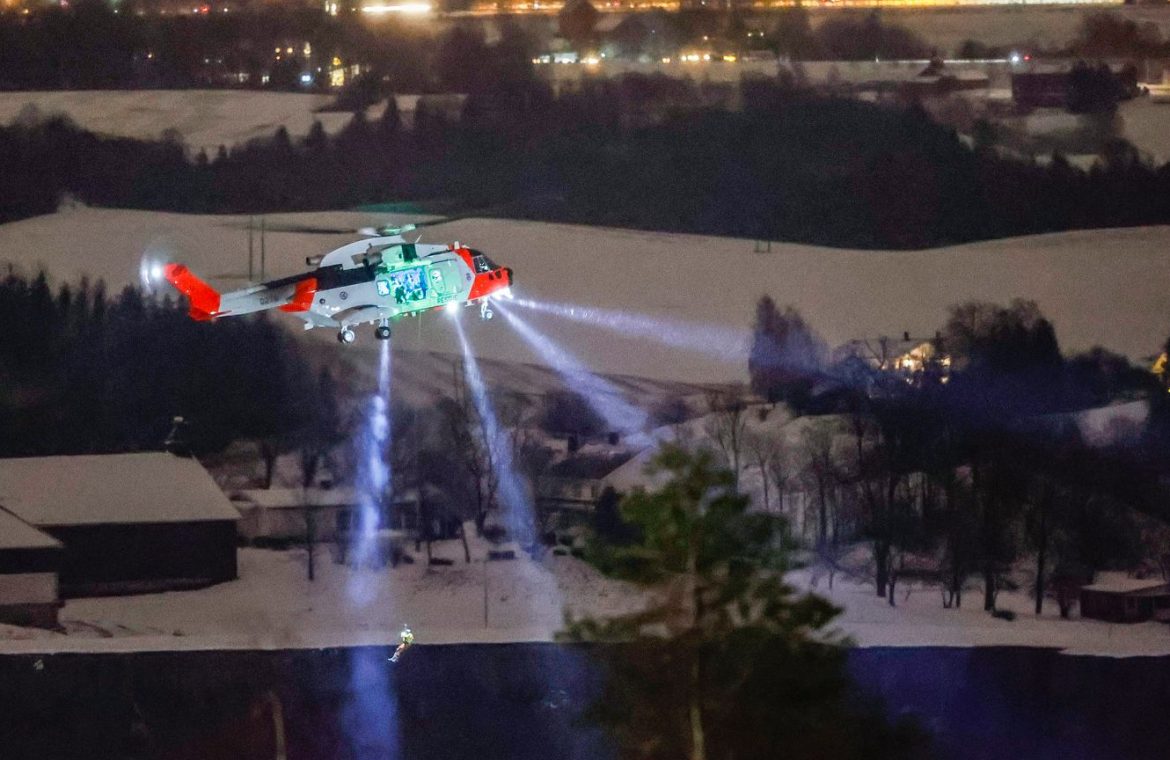In Norway, a landslide occurred in the city of Ask, 30 km north of Oslo. The search for 11 people continues. Approximately. And 10 people were injured, one of them in critical condition.
A kindergarten vanished from the face of the earth
Mieszko Czarnecki *, a Polish man living in Norway, commented on the incident via his Facebook page. A kindergarten has disappeared from the face of the earth. Dozens of homes. On the edge of the newly formed slope there is a center for the elderly. There is no contact with 15 people. Among the missing children for several years. Half a thousand people have been evacuated. Many will not find a place to truly return to Every 10 minutes by car from us, “- he writes.
He adds that the 2004 tsunami in Southeast Asia was the greatest natural disaster in modern history for Norwegians. “It was caused by an earthquake. The greatest natural disaster in modern Norwegian history happened here as well as a tsunami. But it was caused – and how – by a landslide,” he describes. “When a million cubic meters of rock and mud descended from the slope of Lake Lovatnit, a tsunami reaching a height of 70 meters swept across neighboring cities, and 74 people died,” he says.
Chernicki refers to a deadly landslide that occurred in 1936. Then the waves destroyed all farms in Bodal and most of them in Nsdal.
“Because Norway, after Andorra is the most mountainous country in Europe, it is not only rocks. It is a lot of mud from the previous sea floor, which today forms the upper layer of the Norwegian landscape, even 100 kilometers off the shore of the Atlantic Ocean. The sea retreated, but the mud with its bottom remained.Great geological slip. The author further asserts that climate change in Norway is “very clear and fast”, and in Ask herself this year has decreased by 20%. More rain than the long-term average. Instead of 840 mm above a meter of water. W. Poznan 500 mm rains annually. at Szczecin 550mm In addition, 30cm of wet snow fell yesterday and the temperature was around zero. The recipe for the disaster is ready, especially as it was mentioned 15 years ago in their report, the Norwegian Geological Services indicated that the entire municipality of Gerdrum is located in areas at risk of landslides “- says Czarnicky.
“Helicopters fly all the time”
“Helicopters fly all the time. The civil defense is mobilized immediately. The services are trying to do everything they can, but the constantly sliding slope (a really inconspicuous hill) forces the rescuers to withdraw at some points” – he adds.
According to the author of the publication, “No one doubts that there will be more of these disasters,” because global warming and climate catastrophes mean that “southern Norway is no longer snowing and raining.” “This year, in July, in the north near Alta, half of the village slipped into the ocean. Fortunately, no one died. This year in February, in Anpac, fifteen minutes away from us, we fell 300 meters away. Fortunately, At night. This year, this year. This morning, the kindergarten collapsed. Fortunately, the children have Joliveri, “- she says. It concludes, “The largest landslide in the world is located under the sea tens of kilometers from Stavanger. When Storega slipped into the ocean, Britain was no longer a peninsula and became an island.”
Landslide in ASK, Norway
Soil collapsed at ASK on Wednesday morning. According to the Norwegian arrangement the police The missing people live in the areas most affected by the avalanche. “The area is still unstable at the moment and can only be reached by helicopter,” Police Chief Roger Petersen said during the day.
Leading Norway, Erna Solberg offered her condolences on Twitter. “It is heartbreaking to see the forces of nature destroy Gerdrum. I wrote that my thoughts go to everyone affected by the landslide.
Clay soil predominates in southern Norway. According to Reuters, the heavy rains in recent days may have contributed to the mudslide.
* Mieszko Czarnecki has lived in Norway for two years. On Facebook, he tags his columns about this country with the hashtag #zdrugiejstronyfiordu

“Food practitioner. Music junkie. Avid troublemaker. Hipster-friendly creator. Social media lover. Wannabe pop culture fanatic.”







